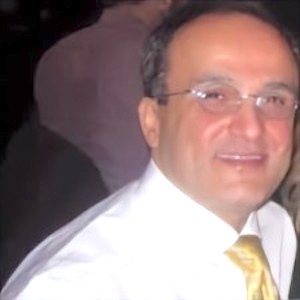Breaking Barriers in Photonic Quantum Computing:
Yale's New Non-Magnetic Optical Isolator

Photonic Integrated Circuits (PICs) are reshaping the future of technology. Unlike traditional electronic circuits that rely on electrons, PICs use photons—particles of light—to transmit and process information. This shift enables systems that are faster, more energy-efficient, and more compact, and it holds the key to breakthroughs in fields ranging from optical communications to quantum computing.
However, for all their potential, PICs have faced a critical limitation: the inability to integrate a component called the optical isolator directly onto chips. That is, until now.
What Is an Optical Isolator—and Why Is It Crucial?
An optical isolator is a component that allows light to pass in only one direction, blocking it in the reverse. This one-way functionality protects sensitive components like lasers from reflected light, which can degrade performance or even damage the system.
In quantum computing—particularly photonic quantum computing—this is essential. Light-based qubits must be precisely manipulated and shielded from noise. Back-reflections can interfere with entanglement, superposition, and other quantum effects, compromising the integrity of computation or communication.
Traditionally, isolators use magnetic materials to achieve this effect. The problem? Magnetic materials are incompatible with standard CMOS (complementary metal-oxide-semiconductor) processes, the same manufacturing techniques used to mass-produce silicon chips. This has forced designers to rely on bulky, external components—a bottleneck for scaling and commercialization.
The Breakthrough: Non-Magnetic, CMOS-Compatible Isolators
A Yale research team led by Haotian Cheng and Prof. Peter Rakich has solved this long-standing challenge by designing a non-magnetic optical isolator that fully integrates with CMOS photonics.
Here’s what makes their solution revolutionary:
-
Massive Bandwidth: Unlike earlier PIC-compatible isolators that operate over a few gigahertz, this new isolator works across 2 terahertz of bandwidth. That’s a 1,000× improvement, enabling use of multiple light frequencies and parallel quantum operations.
-
Nonreciprocal Light Flow: Using two acousto-optic beam splitters, the design creates a nonreciprocal multimode interferometer, allowing precise directional control of light—essential for scalable quantum logic.
-
On-Chip Integration: By eliminating the need for magnetic materials, the isolator can be fabricated using standard chip manufacturing techniques, paving the way for low-cost, scalable quantum photonic chips.
Implications for Quantum Computing
This development has powerful consequences for quantum technology:
-
Scalable Quantum Hardware
By enabling full integration on silicon chips, this innovation makes it possible to mass-produce photonic quantum processors, a crucial step toward practical and commercial quantum computing. -
Improved Error Isolation and Fidelity
Isolators help suppress noise and reflections, ensuring that quantum gates maintain coherence and perform accurately—critical for fault-tolerant quantum computing. -
Multi-Channel Quantum Communication
The ultra-wide bandwidth enables simultaneous transmission of multiple quantum signals, supporting secure quantum key distribution and faster quantum networks. -
Cost Reduction and Miniaturization
Moving from micro-assembled systems to fully integrated platforms reduces system complexity and cost, helping quantum technologies transition from research labs to real-world applications.
In short, this new non-magnetic optical isolator represents a major leap forward in photonic chip technology, especially for quantum computing. By solving a long-standing materials incompatibility, the Yale team has unlocked the potential for fully integrated, mass-manufacturable quantum photonic systems. The implications span far beyond academic interest—this could redefine how we build quantum hardware, communicate across networks, and harness the power of light in the quantum age.

Hamed Nazari
Hamed is an innovative and results-driven Chief Scientist with expertise in Quantum Science, Engineering, and AI. He has worked for leading tech companies in Silicon Valley and served as an Adjunct Professor at UC Berkeley and UCLA.
